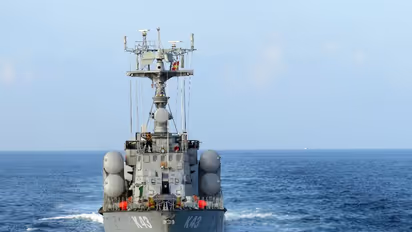Coming soon: A new Indian agency to deal with maritime threats in Indian Ocean

Synopsis
The NMDAC, with an estimated cost of Rs 250 crore, will bring together 15 departments from seven ministries under one roof. Bharat Electronics Limited (BEL) will provide the necessary hardware and software for the centre
With an objective to deal with maritime threats in the Indian Ocean Region (IOR), India will soon launch a National Maritime Domain Awareness Centre (NMDAC), which would collate, analyse and provide actionable intelligence to tackle the maritime terrorism, piracy, trafficking, and illegal fishing among others. The centre will also keep an eagle eye on the expanding Chinese naval activities in the IOR.
Sources in the government establishment told Asianet Newsable said that the discussions are at an advanced stage and "we are expecting the final contract would be signed in a couple of months for formation of NMDAC". The NMDAC will bring 15 departments and organisations across seven ministries under one roof, the sources said. The ministries are petroleum, defence, fisheries, and shipping among others.
The defence public sector undertaking, Bharat Electronics Limited (BEL) will be providing all sorts of hardware and software required in the establishment of the NMDAC. Announced by Indian Navy Chief Admiral R Hari Kumar during Navy Day celebrations in 2022, the government had approved the project estimated to be Rs 250 crore.
The NDMAC will subsume the Information Management and Analysis Centre (IMAC). The IMAC currently source its feed and information on the Indian Ocean Region using the coastal chain of radars and satellites.
The genesis to form this centre goes back to the 26/11 Mumbai terror attacks in 2008, wherein the security was breached through the seas. India set up its Information Management and Analysis Centre (IMAC), the nodal centre of the NC3I (National Command, Control, and Intelligence) Network in 2014 and the Information Fusion Centre-Indian Ocean Region (IFC-IOR) in 2018 as maritime domain awareness hubs for domestic and international information sharing.
The centres are based in Haryana’s Gurugram. The Indian Navy has set up the NC3IN linking 51 stations, including 20 of the Navy and 31 of the Coast Guard. It generates a seamless real-time picture of the nearly 7,500-km long coastline.
IMAC tracks vessels on the high seas and gets data from the coastal radars, white shipping agreements, Automatic Identification Systems (AIS) transponders fitted on merchant ships, air and traffic management systems and global shipping databases.
In the case of the IFC-IOR, there are 12 International Liaison Officers. By 2025-26, it is scheduled to enhance it to 40. Besides, the IFC-IOR has agreements with 25 countries and one international maritime construct on the sharing of white shipping.
Stay updated with the Breaking News Today and Latest News from across India and around the world. Get real-time updates, in-depth analysis, and comprehensive coverage of India News, World News, Indian Defence News, Kerala News, and Karnataka News. From politics to current affairs, follow every major story as it unfolds. Get real-time updates from IMD on major cities weather forecasts, including Rain alerts, Cyclone warnings, and temperature trends. Download the Asianet News Official App from the Android Play Store and iPhone App Store for accurate and timely news updates anytime, anywhere.